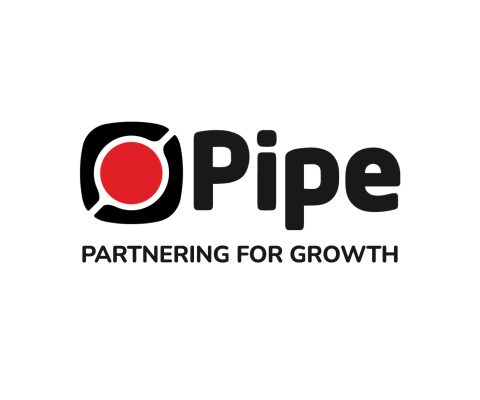January 21st, 2026, posted in news
by Miruna
In today’s world of product development, things move fast. Like, really fast. If you're a company trying to keep up, you need a way to quickly develop, test, and validate your ideas without sinking a ton of money into something that might not work. This is where design sprints come in—a supercharged method for rapid problem-solving and innovation.
So, what exactly is a design sprint? Think of it as a five-day turbo boost for your product development process. Created by Jake Knapp over at Google Ventures, this method helps teams go from "What if?" to "Let's do this!" with speed and confidence.
What is a design sprint?
A design sprint is like a fast-forward button for problem-solving and innovation. It's a time-constrained, five-day process created to answer critical business questions through design, rapid prototyping, and testing with real users. The design sprint is a way to get a team aligned on a vision, build a prototype, and validate it—all within just one week.
Think of a design sprint as a high-energy, collaborative workshop where you take an idea from concept to reality at lightning speed. Instead of spending months debating and developing, you shortcut the endless discussions and leap straight into action. It’s like going from zero to sixty in five days!
Why use a design sprint?
Design sprints are perfect for those moments when you need to tackle a big challenge, develop a new product, refine an existing one, or solve an internal problem. Let’s face it—traditional product development can be slow and costly. A design sprint compresses what could be months of work into just five days, giving you a quick, low-cost way to see if your idea has legs.
But it's not just about speed—it's about focus and alignment. When you run a design sprint, you gather a cross-functional team (think designers, developers, marketers, and product managers) to work intensely together on a single problem. Everyone gets on the same page fast, avoiding the dreaded "too many cooks in the kitchen" scenario.
Who should run a design sprint?
Design sprints aren’t just for designers or product teams—they’re for anyone looking to solve a problem creatively and quickly. Startups often use them to validate a new product idea, while large companies might use them to innovate within established markets. They’re also great for solving organizational challenges, such as improving internal processes or enhancing team collaboration.
What can you solve with a design sprint?
- New product development: Have a groundbreaking idea but not sure if it’s viable? Run a sprint to build and test a prototype before investing heavily.
- Product refinement: Maybe you have a product that’s been around for a while, but it needs a fresh coat of paint or a new feature. A design sprint can help you zero in on what changes will make the most impact.
- Big, hairy challenges: Got a complex, messy problem that needs a creative solution? Use a sprint to focus the team’s brainpower and tackle it head-on.
- Organizational issues: Not just for products! If your team is stuck on an internal process or organizational problem, a design sprint can provide the framework to get unstuck.
Phases of a design sprint
A typical design sprint is structured into five distinct phases, each dedicated to a specific part of the problem-solving process:
- Understand (Day 1): First things first—you need to figure out what you’re actually trying to solve. This day is all about getting everyone on the same page. The team dives deep into the problem, talks to experts, and maps out the customer's journey. It’s like setting the stage before the main act: what’s the challenge? What’s the goal? It’s all about clarity here. After all, if you don’t know where you’re going, how will you know when you get there?
- Ideate (Day 2): Now comes the fun part—coming up with solutions. On Day 2, you get everyone to start thinking outside the box. Got a wild idea? Throw it on the table. This is the day for sketching, brainstorming, and imagining all the different ways you could tackle the problem. No idea is too crazy. This is all about letting creativity run wild and seeing what sticks.
- Decide (Day 3): Time to get serious. Day 3 is all about narrowing down the options. The team votes on the best ideas, debates a bit (hopefully in a friendly way!), and picks the one that seems like a winner. You create a storyboard of how this solution would work in real life. Basically, it’s decision-making day—no room for “what ifs.”
- Prototype (Day 4): Here’s where things start getting real. You build a prototype—a quick and dirty version of your idea. But remember, this isn’t a full-blown product. Think of it like a movie trailer; just enough to show the big picture and get some feedback. You’re not aiming for perfection; you’re aiming for something that’s good enough to test.
- Test (Day 5): Now comes the moment of truth: user testing. You put your prototype in front of real people and watch how they interact with it. What do they love? What’s confusing? Where do they get stuck? The goal here is to get honest feedback fast so you can decide if this idea is worth pursuing or if it needs to go back to the drawing board.
 Source: Google Ventures
Source: Google Ventures
Why use design sprints?
Design sprints are like the secret weapon for companies looking to innovate faster and smarter. They take what could be months of work and squeeze it into just a few days of intense, focused effort. This process not only boosts creativity and teamwork but also speeds up decision-making.
The result? By the end of a sprint, you have a tested prototype, actionable insights, and a clear game plan—significantly cutting down the time and resources needed to bring an idea to life.
Accelerate innovation and minimize risk
In today's fast-paced market, speed is everything. Design sprints let you "fail fast and learn faster," which means you quickly figure out what works and what doesn't. Instead of spending months on a product that might flop, you get a week's worth of intense learning and feedback. Only the best, most viable ideas move forward, saving you time, money, and headaches. This “fail fast” mentality reduces the risk associated with launching new products or features and makes sure you're not investing heavily in ideas that won't pan out.
Foster collaboration and creativity
A design sprint brings together people from different disciplines—designers, developers, marketers, and more—and gets them working closely on a single problem. It's like putting all your best players on the field at once. This mix of perspectives fosters a burst of creativity and ensures that all angles are covered. Plus, having everyone in the same room means decisions are made quickly, without the back-and-forth that can slow things down.
Clear outcomes in a short timeframe
Imagine knowing exactly where your idea stands after just five days. That’s the magic of a design sprint. You end the week with a tangible prototype—a real thing you can test with real users. You also walk away with clear, data-backed insights into what your users need, what works, and what doesn’t. No more guessing or endless discussions—just a focused path forward.
A structured framework for any challenge
Design sprints aren’t just for new products. They’re a flexible framework that can be applied to any big challenge. Want to improve an existing product? Run a sprint. Need to solve an internal problem, like streamlining a process or enhancing team collaboration? A sprint can help with that too. It's a one-size-fits-all approach to tackling problems, no matter how big or small.
Get to market faster with confidence
In a world where first-mover advantage can make or break a company, design sprints give you a structured way to innovate quickly, without second-guessing. You move from idea to prototype to tested concept, all in record time. That means you can get to market faster, with the confidence that comes from knowing you’ve done the groundwork.
Design sprints are a valuable methodology for any organization looking to innovate quickly and effectively. Whether you're launching something new, improving something old, or just trying to figure out your next step, a design sprint gives you the clarity, focus, and speed you need to move forward with confidence. If you haven’t tried a design sprint yet, it might be time to consider how this process could benefit your team.
Excited about the potential of design sprints to supercharge your innovation? Contact us and let’s start sprinting toward your next breakthrough together!


















